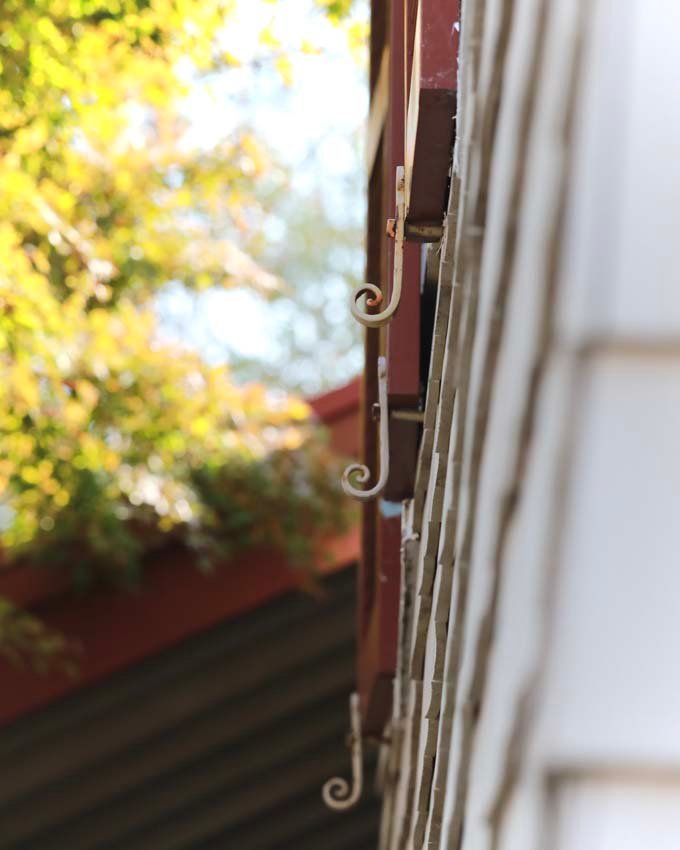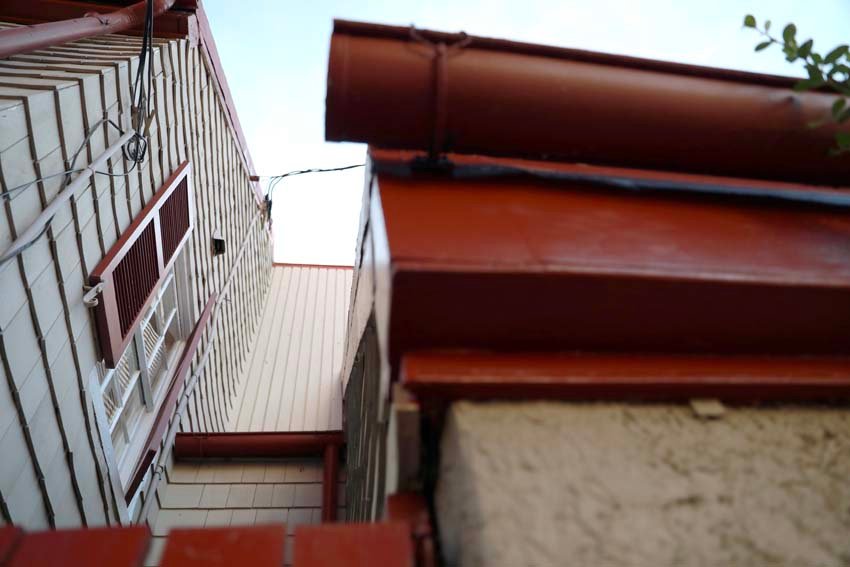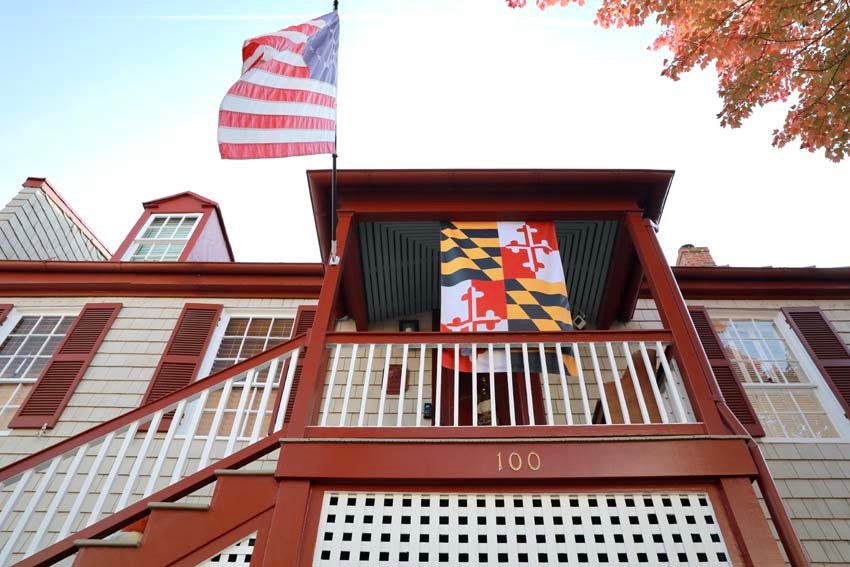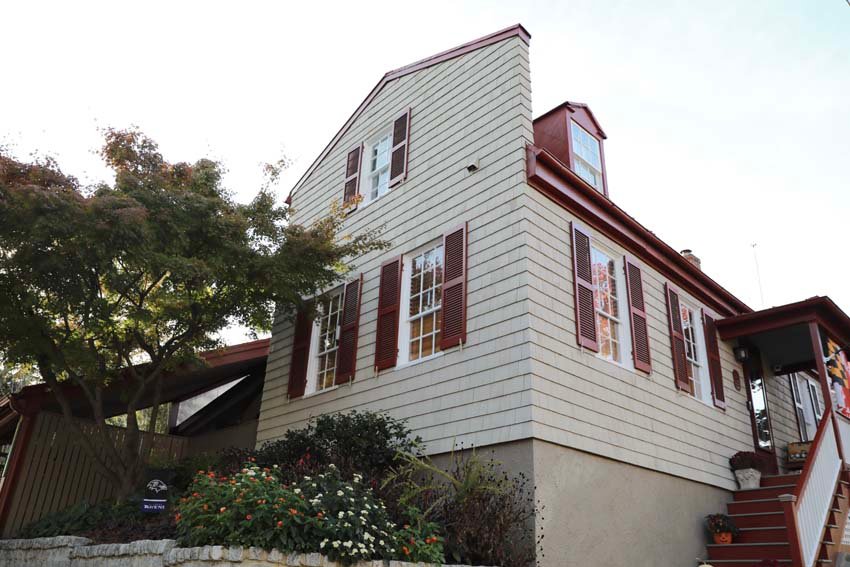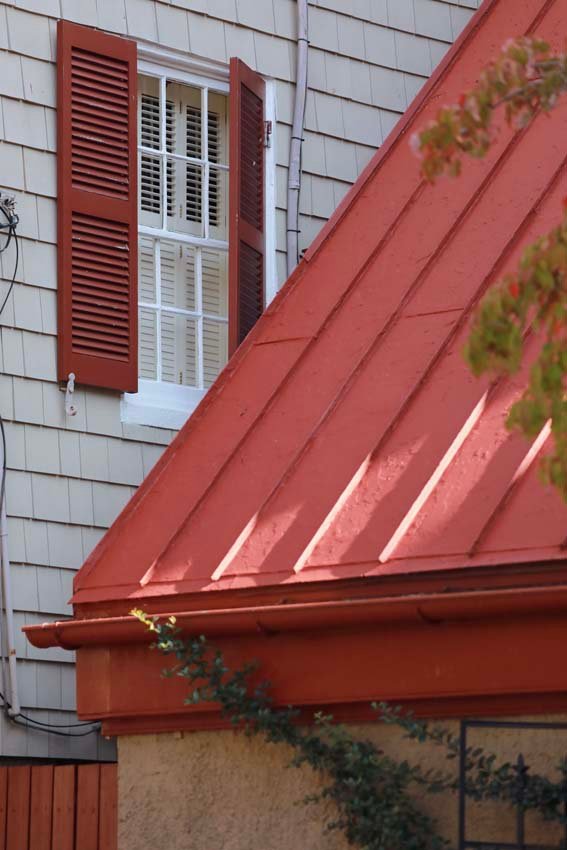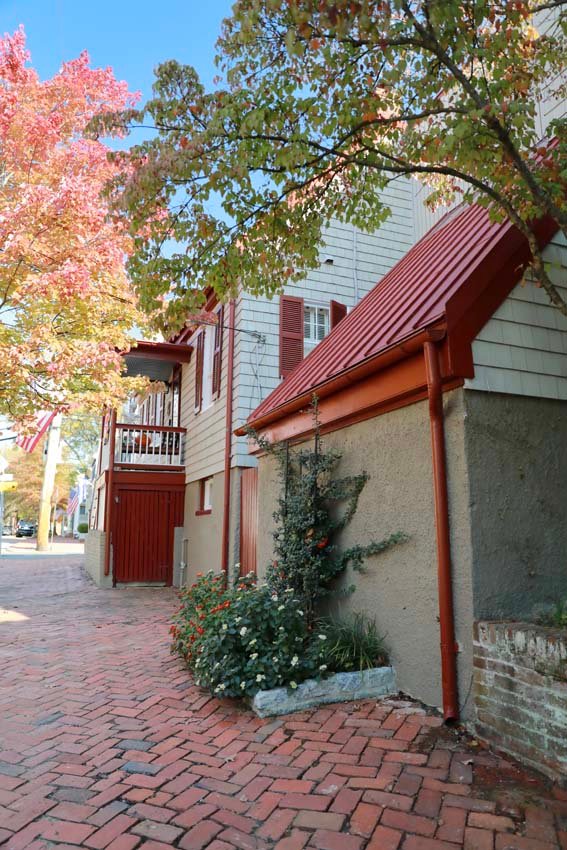+ By Ron S. Ryba II + Photos by Karen Davies
On the corner of Shipwright and Market Streets sits a house that could be one of the oldest wooden homes in Annapolis’ historic district. Tax records date this home to 1695, years before the United States was established. When our family moved into this house, in this neighborhood, we were excited to be living in an area rich with history. We enrolled our daughter in St. Mary’s School, just a few blocks away. It’s been a great fit for our daughter, especially as she can just roll out of bed and, in five minutes, walk to her homeroom. She also loves going downtown to shop and hang out with her friends or just to people watch. There is always something fun to do in downtown Annapolis.
When we first arrived, the previous owners left us a bottle of champagne, a welcome card, and an old binder on top of an antique hatch cover wooden table in the kitchen. The table was procured from Annapolis Maritime Antique Store on Severn Avenue in Eastport and came from a Victory ship called Diamond Head, built in 1945.
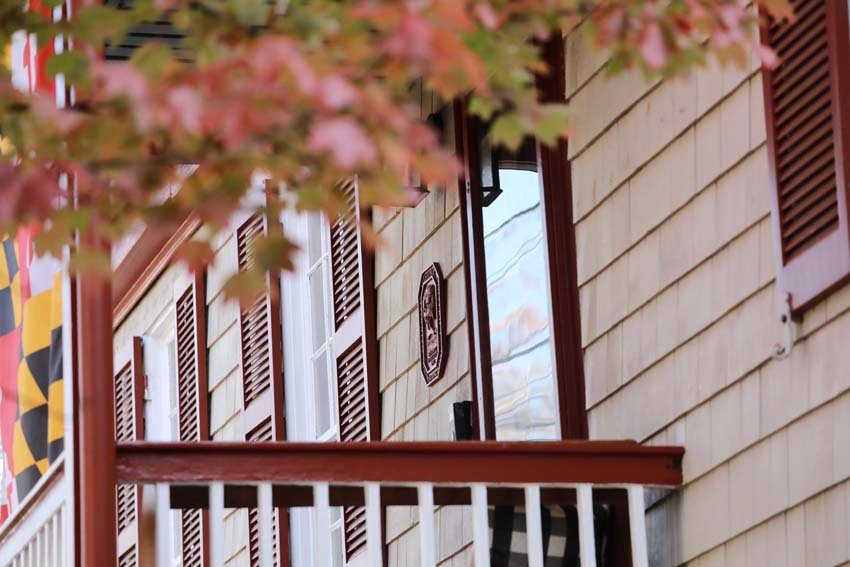
“What a great start to this neighborhood!” I thought. I popped the champagne, made a toast, and sat down, curious to read the mysterious binder. As I read, I realized just how impressive the history of this home and neighborhood was. The documents dated the house to 1727, but it was clear that its origin story was incomplete. The last sentence of the research contained in the binder, written by historian Jane W. McWilliams, stated, “Without the benefit of Clayton’s Ghost, a time capsule, or someone’s eyewitness account, this house’s early history will probably never be known.” I was stunned. Why did the tax records indicate 1695, and what about Clayton’s ghost? Did I just buy a house with a ghost in it? I had to find out the truth.
One of the first things that struck me as peculiar about this house was its design style and unique setting compared with the other homes in our neighborhood. Most of them date back to the eighteenth century. Some are duplexes, others are single homes, but they are primarily townhomes. Our house started as a gabled-roof cottage on a high English basement with a single offset dormer that looks almost identical to a saltbox-style home built in the 1600s. That style is found mostly in New England, not Annapolis. Another intriguing fact is how this house is situated on the corner of Market and Shipwright—its four corners lie on the exact cardinal points of the compass. If you were to run ley lines through our home, the center would be exactly where the north-south and east-west coordinates meet. I surmise only a ship’s captain would be privy to this information back in 1695. Shipwright Street was named after Captain Thomas Todd, whose history in Annapolis is well documented. Spa Creek, along which this house sits, was also called Todd’s Cove in the early beginnings of Annapolis (which was also called Arundel Towne).
In 1977, the house underwent a full renovation with a contemporary design, adding to its character. When it was finished, the house was featured in the fall 1978 issue of Better Homes and Gardens. Renovations included plastering over the old structure’s original foundation, a newly designed, glassed-in back porch with a vaulted ceiling and a glass corner built for a contemporary design, and a two-way fireplace refitted with gas for the kitchen and wood-burning for the living room. The house has gray cedar shingle siding, white shutters, and Cherokee Red trim reminiscent of the signature color used by architect Frank Lloyd Wright. It measures approximately 2,200 square feet in area and has two main bedrooms with a loft that serves as a working office. The loft is a wonderful place to work, as I get to look out over Market Street and contemplate the day’s activities.
I learned that the house had been an orphanage from 1869 to 1940 for the Female Orphan Society of the City of Annapolis. In 1819, according to records, Philip Clayton assessed a house on the lot for $250. Records from 1781 state that a barn had been on the lot. I wondered whether there was a fire or whether the barn had been turned into a modest home for a tradesman in 1819.
Additional research indicates that the property was confiscated prior to the Revolutionary War and then was bought around 1742 by Benjamin Tasker from Daniel Carroll (both prominent historical figures in Annapolis). In 1775, Anne Tasker, wife and heir of Benjamin Tasker, died, leaving her real estate holdings, including the property, to her grandson Daniel Dulaney. A survey by James Stoddert shows that the owners of this lot in 1705 were the Bladen family. I wondered why there was so much interest in this house from so many of Annapolis’ founders and what made it so desirable. Construction of this home logically dates farther back in time, as the design has baffled many architects about its origins for years.
I found a research paper about Market Street showing that, in 1672, Dr. Robert Busby bought 90 acres along Spa Creek that ran to Halls Land and Lord Baltimore’s land. Included in this land purchase apparently was also a house that was on the property. Could it have belonged to Robert Busby and, before him, maybe Captain Thomas Todd? Surveys of Annapolis, from Augustine Hermann’s 1670 map to Richard Beard’s 1684 map and James Stoddert’s 1718 map, does not yield answers. Beard’s map was the first to reference the corner of Market and Shipwright Streets but do not indicate homes. More research and luck are needed to find the origins of this home. We may never know the true origin of 100 Market Street—it is still a mystery to this day.
Annapolis is a great city, and Market Street is a wonderful place to live, with all its history. There is a story and culture to be found in each one of its homes. On the Fourth of July, Market Street holds a neighborhood party so that everyone can meet up, get to know each other, and enjoy the festivities. This party helps us meet our new neighbors, offer support for questions they may have, and celebrate our liberty from days gone by. One neighbor is designated each year to read the Declaration of Independence to remind us of our freedoms. We have a small folk band playing on the sidewalk, tie-dye station if you want to make your own tie-dye T-shirts, and different areas where people sit and converse while the kids go off to play games. We all bring food and drinks for everyone to share.
I can only imagine the events that occurred while this house has stood over the years and what secrets lurk within its shaded corners. Speculation about and research into this home’s origin point to humble beginnings. Perhaps someone searching for the truth may finally learn of it. I must report that, to date, we have not met any ghosts. However, I do wish these walls could talk.


